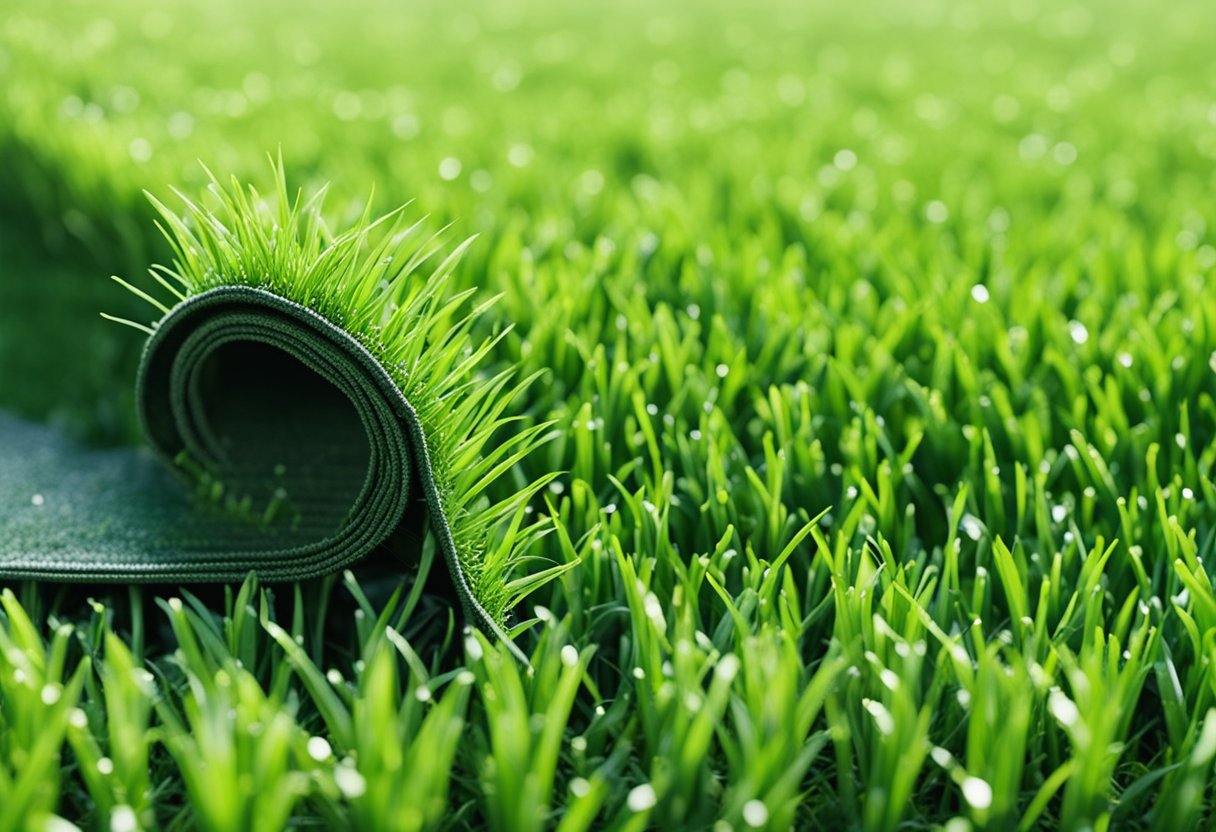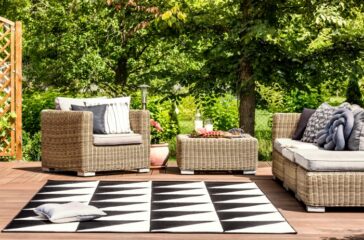How to Create a Low-Maintenance Garden: Tips and Tricks

Table of Contents
- 1 Assessing Your Space
- 2 Choosing Low-Maintenance Plants
- 3 Designing the Garden Layout
- 4 Implementing Smart Irrigation
- 5 Low-Maintenance Garden Care
- 6 Hiring a Rental Property Manager vs DIY: Insights for Property Owners
- 7 Pros and Cons of Artificial Lawn in Australia: Key Factors to Consider
- 8 Hiring a Rental Property Manager vs DIY: Insights for Property Owners
- 9 Interior Design Tips for Your Living Room: Transforming Spaces with Style
- 10 Interior Design Tips for Your Living Room: Transforming Spaces with Style
- 11 Inexpensive Ways to Improve Your Home’s Appearance for Summer: Top Tips and Tricks
Creating a low-maintenance garden can provide numerous benefits, particularly for those with busy lifestyles or limited gardening knowledge. A carefully designed, low-maintenance garden not only reduces the required upkeep but also ensures a visually appealing and environmentally friendly outdoor space.
When planning a low-maintenance garden, there are several factors to consider, such as plant selection, landscaping materials, and functional design features. By thoughtfully considering these elements and implementing practical solutions, garden enthusiasts can enjoy a more relaxed gardening experience and focus on the joy that their outdoor space brings them.
Throughout this article, readers will learn about various approaches to creating a low-maintenance garden, from choosing plants that require minimal care to employing landscaping techniques that reduce the need for ongoing maintenance. With these tips in hand, it’s possible to create a beautiful and hassle-free garden that can be enjoyed all year round.
Assessing Your Space
When planning a low-maintenance garden, assessing your space is a crucial first step. It helps you understand the garden’s unique features and choose the most suitable plants and materials.
Sunlight and Shade
Start by observing the sunlight and shade patterns in your garden throughout the day. Take note of areas that receive direct sunlight, partial shade, or full shade.
- Direct sunlight: At least six hours of sun per day.
- Partial shade: Three to six hours of sun per day.
- Full shade: Less than three hours of sun per day.
By understanding these conditions, you can select plants that thrive in the specific light conditions of your garden, reducing the need for extra care and maintenance.
Soil Type and Quality
The next step is to analyze your garden’s soil type and quality. This information will help you choose plants that grow well in your soil, making it easier to maintain a healthy garden with less effort.
There are three main types of soil:
- Sand: Drains quickly and heats up fast.
- Clay: Retains water and nutrients, but drains slowly.
- Loam: A balanced mixture of sand, clay, and organic matter.
You can identify your soil type using a simple test. Squeeze a handful into a ball and see how it reacts:
- Sandy soil: The ball falls apart.
- Clay soil: The ball holds its shape and feels sticky.
- Loamy soil: The ball holds its shape but crumbles when poked.
Don’t forget to assess your soil’s pH level, as it also influences plant growth. Soil pH testing kits are widely available online or at garden centers. Knowing the pH will help you choose the right plants and avoid unnecessary maintenance.
Choosing Low-Maintenance Plants
When designing a low-maintenance garden, the choice of plants plays a significant role in reducing the required care and effort. By selecting drought-tolerant plants, native species, and perennials, gardeners can create a beautiful space with minimal work. In this section, we will explore each of these categories.
Drought-Tolerant Plants
Drought-tolerant plants are an excellent option for low-maintenance gardens as they require less frequent watering. These plants have adapted to survive in conditions with limited water, making them ideal for gardeners who wish to conserve water and minimize maintenance. Some popular drought-tolerant plants include:
- Succulents (e.g., Echeveria, Sedum, Agave)
- Lavender
- Rosemary
- Ornamental grasses (e.g., Blue Fescue, Mexican Feather Grass)
Native Plants
Native plants are another excellent choice for low-maintenance gardens due to their natural adaptation to the local climate and soil conditions. They generally require less care than non-native species, and they are often more resistant to pests and diseases. Additionally, native plants provide essential habitat for local wildlife. Some examples of native plants are:
- Wildflowers (e.g., Black-eyed Susan, Coneflower, Indian Blanket)
- Trees and shrubs (e.g., Redbud, Dogwood, Serviceberry)
- Grasses (e.g., Big Bluestem, Buffalo Grass, Switchgrass)
Perennials vs. Annuals
When choosing plants for a low-maintenance garden, perennials are generally a better choice than annuals. Perennials are plants that live for more than two years, while annuals complete their life cycle within a single year. By incorporating perennials, gardeners can reduce the amount of replanting and maintenance necessary each year. Some recommended perennial plants for low-maintenance gardens include:
- Hostas
- Daylilies
- Aster
- Sedum
By considering drought tolerance, native species, and perennial plants when selecting plants for a low-maintenance garden, gardeners can create a visually appealing and environmentally friendly space with minimal effort.
Designing the Garden Layout
The foundation of a low-maintenance garden lies in a thoughtfully designed layout. By taking some intentional steps, you can create a visually appealing landscape that requires minimal upkeep. The following sub-sections detail various aspects to consider when designing your garden layout.
Creating Garden Zones
Dividing the garden into distinct zones is the first step in designing a low-maintenance garden. Group plants with similar water, light, and maintenance requirements into the same area. This strategy simplifies tasks such as watering, weeding, and pruning.
- Water-efficient plants: Opt for drought-tolerant or native plants that are well-suited to the local climate.
- Trees and shrubs: Choose low-maintenance varieties that provide structure and interest throughout the year.
- Edibles: Group vegetable and fruit plants together for convenience when watering and harvesting.
Using Mulch and Groundcovers
Mulching and groundcovers play a vital role in a low-maintenance garden. These elements help retain moisture, control temperature, and suppress weeds, reducing the necessary work.
Here are some benefits of using mulch and groundcovers:
| Benefits | Mulch | Groundcovers |
|---|---|---|
| Moisture Retention | Yes | Yes |
| Weed Control | Yes | Yes |
| Erosion Control | Yes | Yes |
| Temperature Regulation | Yes | No |
Incorporating Hardscaping
Hardscaping, such as paths, patios, and retaining walls, can add functional and aesthetic value to your garden. They not only create a visual appeal but also provide low-maintenance spaces that reduce the amount of planting and lawn care required. Consider the following hardscaping elements:
- Paths: Opt for materials such as pavers, gravel, or crushed stone that require minimal upkeep.
- Patios: Use low-maintenance materials, like natural stone or stamped concrete, for a durable, low-maintenance surface.
- Retaining walls: Construct retaining walls with materials that blend well with the surrounding landscape and require little to no maintenance, such as stone or brick.
Implementing Smart Irrigation
Creating a low-maintenance garden can be achieved by implementing smart irrigation techniques. These techniques not only save time and effort but also conserve water resources. In this section, we will discuss the following sub-sections: Drip Irrigation Systems, Rainwater Collection, and Efficient Watering Techniques.
Drip Irrigation Systems
Drip irrigation systems are a water-efficient solution for low-maintenance gardens. By delivering water directly to the plant roots, this approach minimizes evaporation and runoff. Moreover, it allows the gardener to maintain control over the amount of water supplied to each plant, thus preventing overwatering or underwatering.
Components of a typical drip irrigation system include:
- Mainline tubing
- Drip emitters
- Microtubes and stakes
- Pressure regulating valves
- Backflow preventer
- Timer or controller
Rainwater Collection
Rainwater collection is an eco-friendly irrigation method that helps gardeners conserve water. By installing a rain barrel or cistern, excess rainwater can be stored for future irrigation needs.
The essential components of a rainwater collection system include:
- Roof catchment surface
- Gutter and downspout
- Screen or mesh filter
- Storage tank
- Overflow mechanism
- Pump (if needed)
Connecting a soaker hose or drip irrigation system to the rainwater storage tank can make for efficient watering of the garden, saving both time and resources.
Efficient Watering Techniques
Beyond implementing drip irrigation systems and rainwater collection, employing efficient watering techniques can contribute to a low-maintenance garden. Some effective methods include:
| Technique | Benefits |
|---|---|
| Watering early in the morning or late in the evening | Reduces water loss due to evaporation |
| Using a soaker hose | Delivers water slowly, directly to the plant roots |
| Adding mulch around plants | Conserves soil moisture and suppresses weed growth |
| Grouping plants with similar water needs | Increases watering efficiency and reduces the risk of overwatering or underwatering |
Low-Maintenance Garden Care
Maintaining a low-maintenance garden can be relatively easy if you follow practical guidelines. This section will explore some essential care practices, such as pruning and trimming, fertilizing and pest control, and managing weeds.
Pruning and Trimming
Pruning and trimming are crucial to keeping your garden looking neat and promoting healthy plant growth. By eliminating dead or overgrown branches, you enable plants to receive more sunlight and air circulation, preventing disease outbreaks.
- Prune deciduous shrubs and trees during their dormant season.
- Remove dead, damaged or diseased branches to reduce stress on the plant.
- Trim hedges regularly to maintain their shape.
Fertilizing and Pest Control
A low-maintenance garden benefits from proper fertilization and pest control practices. Implementing these methods will ensure that your plants receive the necessary nutrients and remain free of harmful pests.
| Fertilizer Type | Application Frequency |
|---|---|
| Organic | Once or twice per year |
| Slow-release granular | Every 3-4 months |
For pest control, consider using natural methods such as:
- Introducing beneficial insects like ladybugs and lacewings.
- Applying organic pesticides like neem oil or insecticidal soap.
- Encouraging birds and small mammals that feed on garden pests.
Managing Weeds
Effective weed management is essential to ensure that your low-maintenance garden remains in proper condition. The following practical tips can minimize weed growth:
- Apply a layer of mulch to suppress weed germination and growth.
- Use weed barriers like landscape fabric beneath gravel or bark mulch.
- Regularly inspect the garden and remove young weeds promptly.
By staying on top of pruning and trimming, fertilizing and pest control, and managing weeds, your low-maintenance garden will stay healthy and attractive with minimal effort.
Hiring a Rental Property Manager vs DIY: Insights for Property Owners

Table of Contents1 Hiring a Rental Property Manager2 Key Responsibilities of a Property Manager3 Cost of Hiring a Property Manager4 Benefits of Hiring a Property Manager5 Doing It Yourself (DIY)6 Key Responsibilities of a DIY Landlord7 Costs of DIY Property Management8 Benefits of DIY Property Management9 Comparing the Two: Hiring vs. DIY10 Factors to Consider […]




 Hiring a Rental Property Manager vs DIY: Insights for Property Owners
Hiring a Rental Property Manager vs DIY: Insights for Property Owners How to Choose the Right Mattress: A Comprehensive Guide
How to Choose the Right Mattress: A Comprehensive Guide Inexpensive Ways to Improve Your Home’s Appearance for Summer: Top Tips and Tricks
Inexpensive Ways to Improve Your Home’s Appearance for Summer: Top Tips and Tricks Interior Design Tips for Your Living Room: Transforming Spaces with Style
Interior Design Tips for Your Living Room: Transforming Spaces with Style How to Create a Low-Maintenance Garden: Tips and Tricks
How to Create a Low-Maintenance Garden: Tips and Tricks


